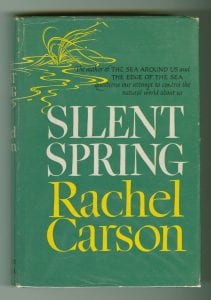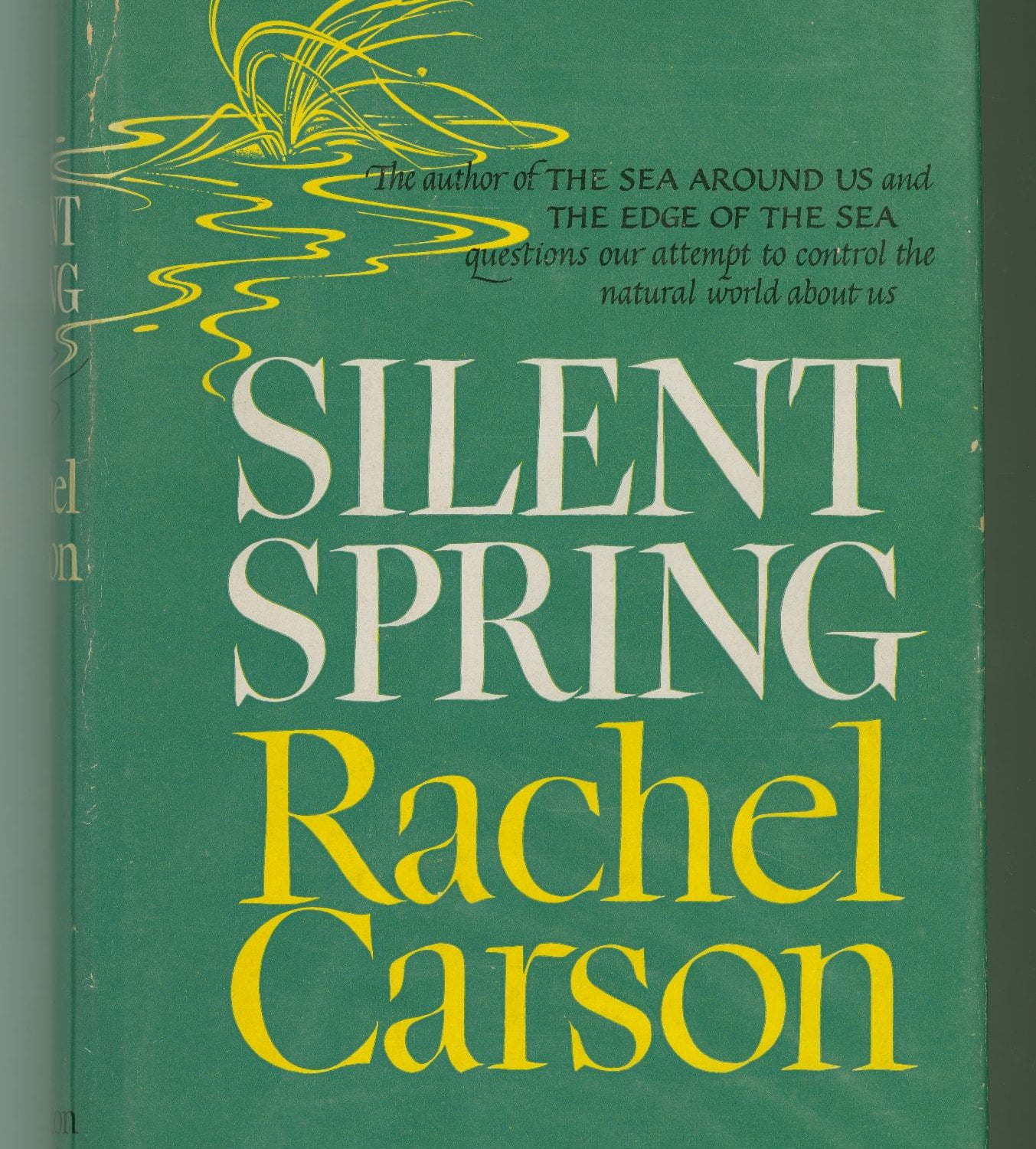
A Fable for Tomorrow
This first edition of Silent Spring was published eight years before the first Earth Day but was a catalyst for the environmental activism that informed it. An examination, written for the general public, of the effect of pesticides, especially DDT, on the environment and human health, Silent Spring begins with a chapter entitled “A Fable for Tomorrow” in which a small town in America finds a “strange blight crept over the area and everything began to change.” Birds and bees disappear, fish and baby piglets die off, plants wither, and “the farmers spoke of much illness among their families.” Spring comes, but without an abundance of life. Carson, born in Springdale, Pennsylvania, worked as a marine biologist for what would become the US Fish and Wildlife Service before she dedicated herself to writing full time. In an interview, she remarked, “Man’s attitude toward nature is today critically important simply because we have now acquired a fateful power to alter and destroy nature. But man is a part of nature, and his war against nature is inevitably a war against himself.” Carson died of breast cancer two years after the publication of Silent Spring.
Rachel Carson, with illustrations by Lois and Louis Darling
Silent Spring
Boston: Houghton Mifflin Company, 1962
CO2 PPM in 1962: 317.2
Additional Information
Silent Spring can be borrowed as an e-book here (requires registration): https://archive.org/details/unset0000unse_o5r3
